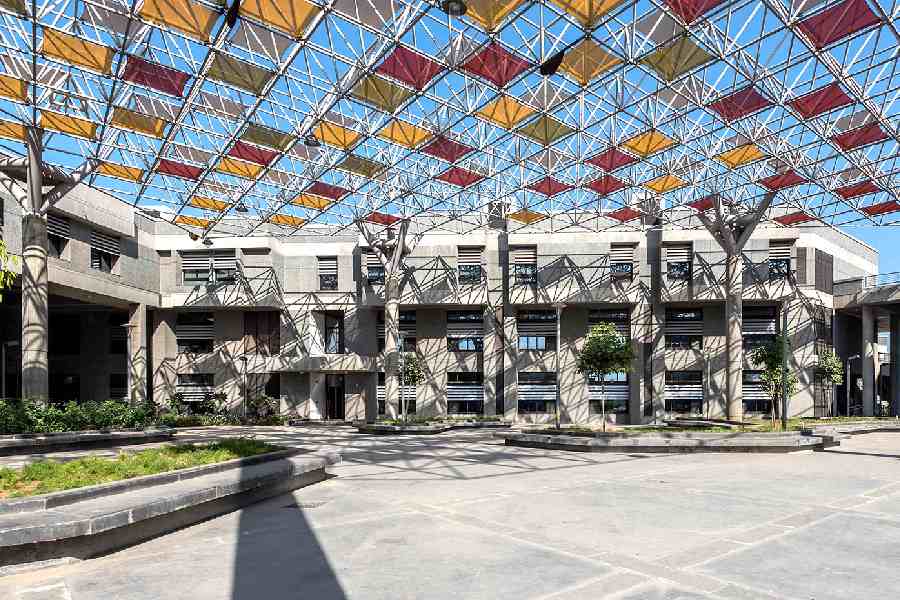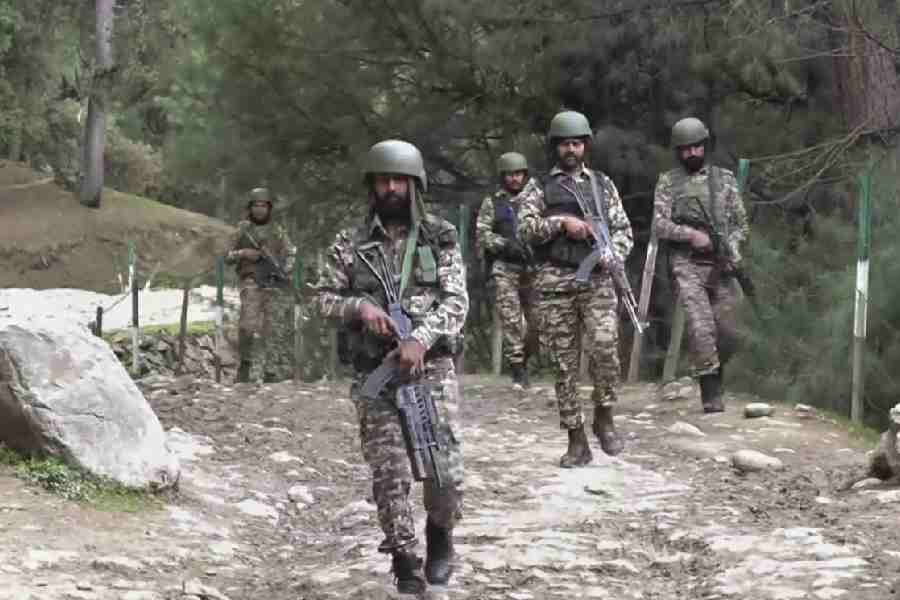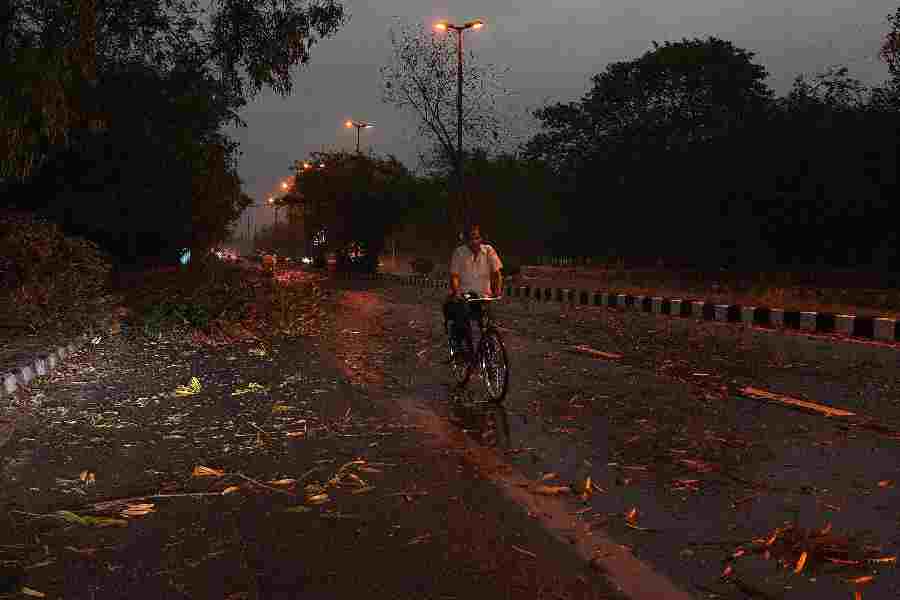
After the infamous San Andreas Fault gives in, triggering a magnitude 9-plus earthquake in California, a search and rescue helicopter pilot (Dwayne Johnson) and his estranged wife (Carla Gugino) make their way together from Los Angeles to San Francisco to save their only daughter.
But their treacherous journey north is only the beginning. And when they think the worst may be over… it’s just getting started.
The action thriller San Andreas reunites Dwayne Johnson with director Brad Peyton and producer Beau Flynn, following their collaboration on the global hit Journey 2: The Mysterious Island.
San Andreas imagines the largest magnitude earthquake in recorded history. A seismic swarm along a previously undetected fault near Nevada’s Hoover Dam crosses the border to trigger California’s notorious San Andreas Fault, which erupts in a massive jolt that rocks Los Angeles to its core. But it doesn’t stop there. The shockwave travels up the fault line, setting off a ripple effect of chaos and destruction all the way to San Francisco.
THE HEART OF EVERY STORY IS ITS PEOPLE
Dwayne Johnson stars as the story’s pivotal character, Ray, an LAFD Search and Rescue helicopter pilot who embarks on a deeply personal mission when the disaster strikes, vowing to bring his estranged wife and their daughter to safety amidst the escalating fallout. “I was captivated by the script. I was moved. It grabbed me by the throat and didn’t let go,” he says. “When an earthquake hits, there’s no warning. Shifting tectonic plates can trigger aftershocks and even additional quakes and you just try to get through it, minute by minute, and that’s what makes San Andreas such a heart-pounding experience. It keeps coming at you.”
“A movie like this is about size and scope,” he continues. “You’re imagining the biggest earthquake of all time, so what would that look like for audiences? But for Ray, it’s about more than survival. He’s trying to keep his family together… in more ways than one.”
It was this fusion of wide-scale calamity and intensely personal connections that drew not only Johnson but director Brad Peyton to the project. Says Peyton: “This is different from anything I’ve done before. It was more demanding in its larger-than-life elements, but also in striking that tonal honesty. I wanted the characters to ring true so audiences could see it through their point of view as opposed to standing back and witnessing it from a safe distance. Because, as impactful as the action is, at the heart of every story are people you care about.”
The idea for San Andreas originated with Flynn, a long-time fan of classic disaster films who was eager to update the genre with today’s 3D capabilities and cutting-edge technology to create photorealistic images. Beyond that, he concedes: “The reason this movie resonates so much with me is that within three weeks of my moving to Los Angeles, the Northridge earthquake hit. I had never even felt a tremor before and to experience a major earthquake was terrifying, powerful. It makes you feel very small and humble. I was always fascinated by the San Andreas Fault, specifically. It’s just something I think people are aware of, consciously or not. It’s in the zeitgeist.”
Within the broad canvas of a catastrophic quake, San Andreas finds its heart in the deepest instincts such an unpredictable and uncontrollable force of nature provokes: our need to reach out to others and to confirm what’s most important to us. “Disasters have a way of bringing out the best in people,” Peyton suggests. Individuals gain focus and find strength. Ordinary people become heroes, while heroes push themselves to the limit.”
Adds Flynn: “I think it’s fair to say no one knows exactly what they would do when faced with a fight-or-flight scenario, and that’s something we explore in the movie.” In Ray, this instinct is put to the ultimate test. “People everywhere can relate to family, and how far we’re willing to go to protect the people we care about,” says Johnson.
“Brad is an excellent storyteller and he knows exactly where the drama and the heart are,” says Flynn. “He always brings the focus back to the characters and those small moments — whether it’s a young couple like Blake and Ben just starting a relationship amidst the destruction, or Ray and Emma, a couple with a rich history, who rediscover the best in each other when things are at their worst.”
A massive confluence of moving parts, San Andreas also employed more than 1,300 visual effects shots as roads buckle, bridges snap, fires erupt across multiple cityscapes and buildings fall, smashing into other buildings on their way down like goliath dominoes. Then, just when it’s time to catch your breath, a 15-storey tsunami — a virtual wall of water — comes crashing into San Francisco.

HIGH CONCEPT, HIGH EMOTION
Weaving together the various creative elements, from sets, locations and stunts to practical and digital effects, Peyton’s directive was always to make each piece of the mosaic as visually realistic as possible. Even though San Andreas included a great deal of CGI, that meant accomplishing a significant amount of the action in-camera, certainly more than might be expected on a movie of such scale.
“I think there were maybe three days when we were walking around on solid ground,” Peyton recounts. “If we weren’t in the water, we were on a boat gimbal or a helicopter gimbal. For a week, I was shooting a boat on a green screen stage, doing all these stunts with water flying around; then it was a helicopter for another week; then a plane. It was pretty wild. I think shifting gears that much was good for the movie because we were always on the move.”
Says Flynn: “I’m a massive believer in 3D technology. With San Andreas, we wanted to make the first 3D earthquake disaster film.”
The production captured a large portion of exteriors in Los Angeles and San Francisco, which were then combined with location shoots in and around Australia’s Gold Coast region in southeastern Queensland. Several major sets were built on Village Roadshow Studios’ sound stages, including its nearly 13,000-square foot water tank — the largest purpose-built film water tank in Australia and one of the largest in the world, with a 1.5 million gallon capacity.
“It’s the kind of story I love to tell: high concept, high emotion,” says Flynn.
“There’s action, love, drama, and heroes,” Dwayne Johnson sums up. “And, there’s the greatest foe known to man: Mother Nature.”

Which is your favourite disaster film? Tell t2@abp.in










